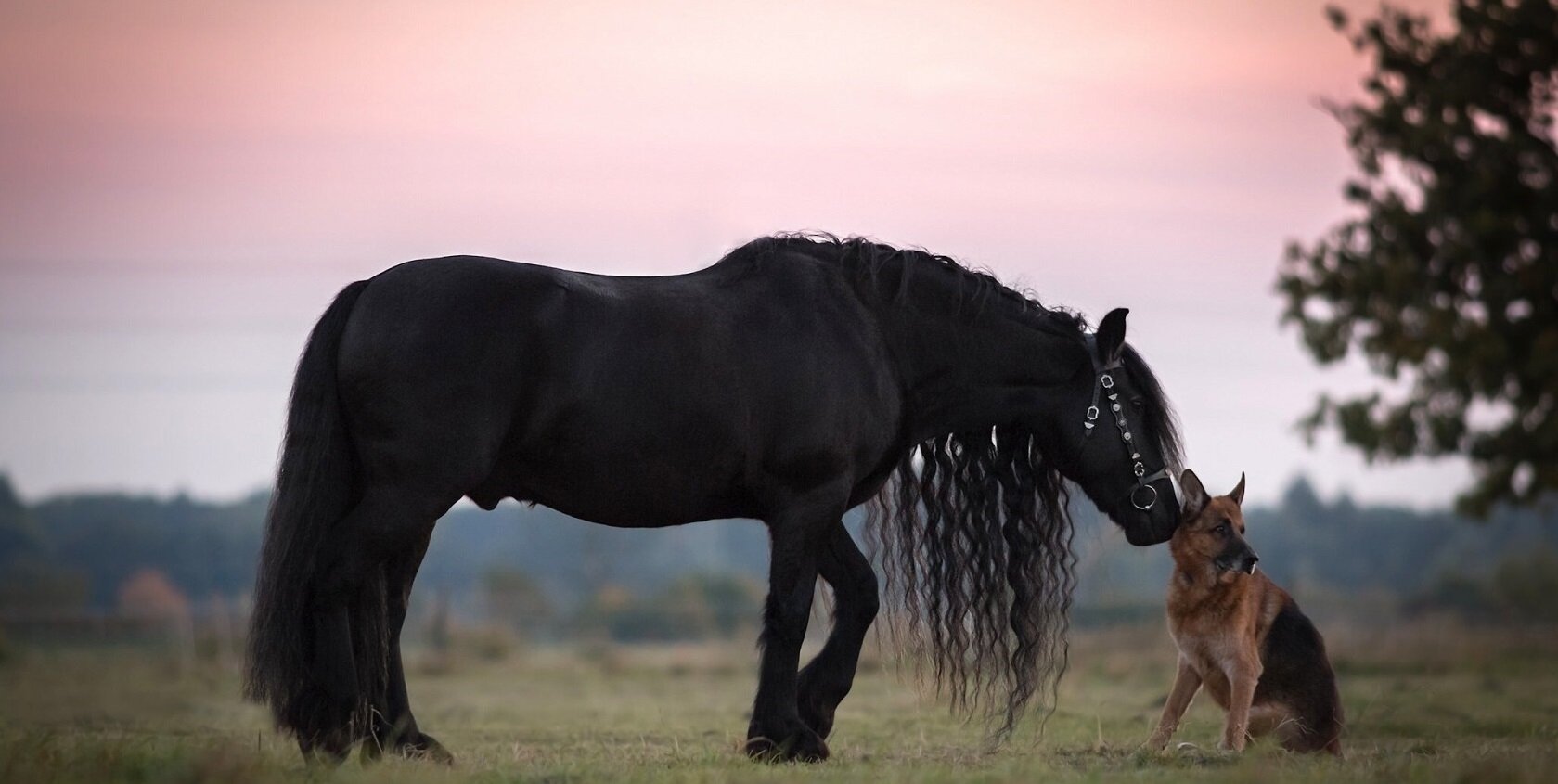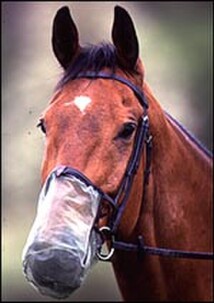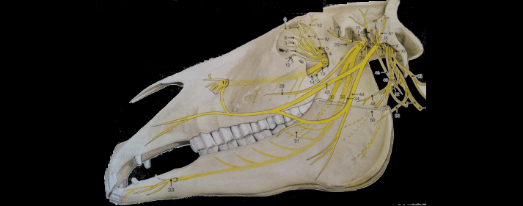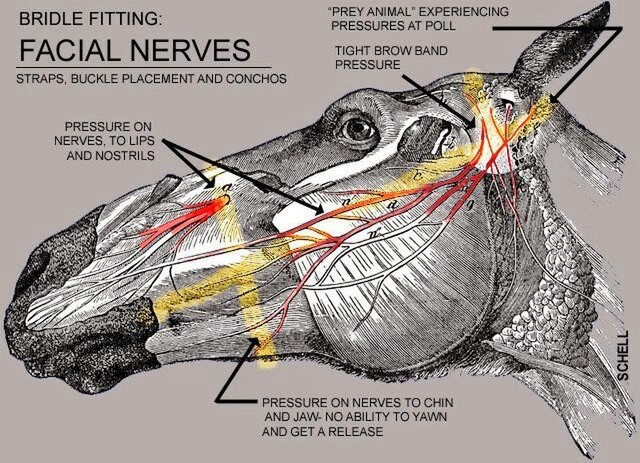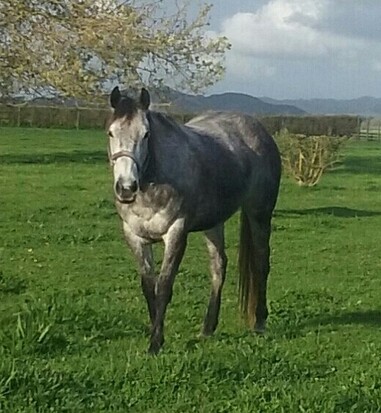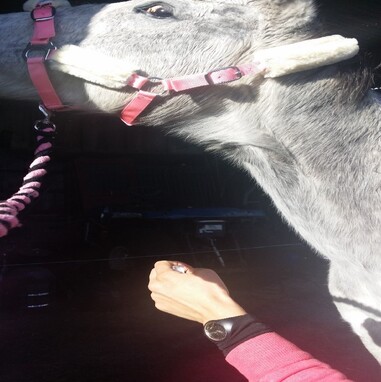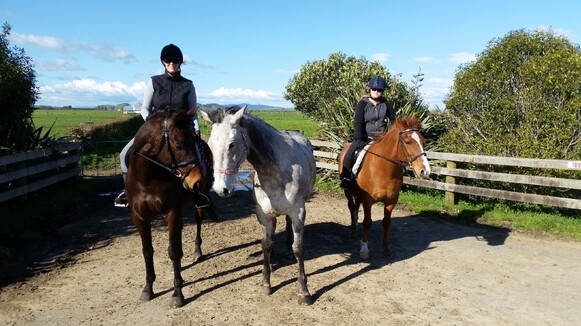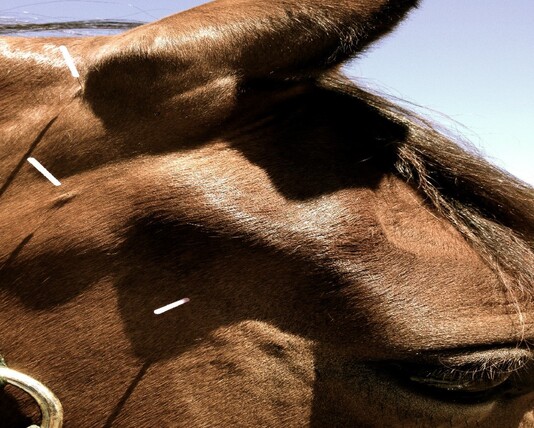Hi,
I wanted to share with you one of my neurological head shaking case studies and her progress with Acupuncture, Moxa, Muscle release and certain supplements that have helped diminish extent of the head shaking.
This particular case I met in June and the mare had become a violent head shaker after routine veterinary dental work 3 weeks prior to her AMRT session. She was head flicking every few seconds and appeared extremely uncomfortable to the extent of her owner considering possibly putting her down.
The amazing thing about horses is how such large, powerful animals can be exquisitely aware of the slightest sensation, such as a small insect on its back or face. Rippling of skin or an occasional head shake is a normal response to the tickling trigger of nerve endings. But, there are times when a horse can't stop shaking or tossing its head to a seemingly inapparent sensation; such incessant behavior is known as headshaking.
Even when we understand the horse is experiencing discomfort or pain, it is hard to ignore it or stop natural aversion reflexes. In the case of headshaking, a horse doesn't understand why his muzzle or face persistently feels a tingling or painful sensation. Headshaking behavior is considered to be caused by over activity of branches of the trigeminal nerve that supply sensation to the face and muzzle. A horse's behavioral reflex causes them to flip their head, snort or sneeze, rub its head, or take evasive action. Most headshaking horses (89% of them) flip their head vertically, according to research findings.
A treatment for headshaking with a favorable success rate in 40% of cases is a face mask with a nose net.
"The nose net provides a mechanical stimulus, like sticking a finger on your nose, which sends afferent (conducting) impulses up the nerve so it quits firing. Not all horses are improved with nose nets."
"Allergies have been looked at as a cause, but there is a lot of indirect evidence to suggest that allergies are not the cause. For example, allergy testing and hyposensitization injections along with antihistamine and/or steroid therapy are strategies that typically control allergies for the short term, yet these approaches still do not control most cases of headshaking.
Treatment using infra-orbital neurectomy, corticosteroids, antihistamines, cyproheptadine, and muzzles and other physical means have had mixed success, with relief most often temporary.
“This is some of what the owner of Phoenix had to say regarding the case”
Case Study session of Miss Phoenix, 10-year-old thoroughbred mare, 2017.
“Phoenix is an ex-polo pony and has been my pleasure horse for almost three years. In May this year, she underwent a routine teeth floating procedure with the vet and came out of the anaesthetic with an extreme and obviously highly distressing head flick. After the vet had returned and had scans done and we had tried various treatments, he suggested that it was the usual horse "head flicking" behaviour and unlikely to improve.
The head shaking may have been triggered by her jaw being opened wide during her teeth floating procedure and setting off a series of old muscular injuries and tight spots that may have affected her nerve pattern, and ultimately affecting her neurological pathways.
The head flicking was extreme enough to drive her to distraction; several times she bolted through electric tapes and she could not keep still. She was flicking every 4 - 5 seconds, stomping her feet, and highly distressed.
The pain was obviously relentless. I was not at all confident at this point about keeping her alive in this condition because of her pain levels, and because the vets had done all they could with no result. It was too hard to look at her, and it was a very rough time for her animal and human family as we came to terms with losing her.
Three weeks after the head flicking started, Nash had her first appointment with us. As I lead Phoenix in to see Nash, she was violently head flicking every few seconds. Nash worked on Phoenix for almost two hours, using a combination of Acupuncture, Moxa, Myofascial Release and other supporting aides such as cross tapes and etc.
The effect was immediate, and Phoenix returned to her field without flicking her head once in 3 weeks, she appeared almost pain free.” The Recommendation was also to aid the Acupuncture sessions with herbal remedies and also a head shaking remedy known as Top Stocks which has been helpful in cases such as Phoenix.
Other Recommendations during the acute phase of head shaking was to use a head collar with sheepskin to help alleviate some of the pressure over head and nose, nose net and to restrict grass intake especially at night time and etc. Also not making any additional changes like taking shoes off and etc. so as to not cause additional tensions and pain.
“The head flicking gradually returned over the next few days but was eased again with Phoenix's second treatment, this time the effects lasting a couple more days. Over six treatments a week apart, and with the added benefit of Top Stock formula for head shakers, Phoenix returned to being a pain-free and virtually symptom-free, happy little horse.”
“After her first 6 weekly sessions, Phoenix received a session a month later then approx. six weeks later and her most recent session was 8 weeks apart. Having had a total of ten treatments over approximately 3 months, Phoenix can now be lead out on hacks, travel in the float, and have a gallop around the paddock, all without setting her off head flicking. We have hopes that she will be rideable again, something that I could never have imagined a few months ago.
Thank you so much, Nash, for bringing my lovely mare back to me. The day she saw your car and trotted to the fence to greet you was the day I knew she was going to be okay.”
Phoenix’s owner was extremely vigilant with all the recommendations and additionally did her own research in head shaking cases and I believe that is one of the reasons of this success story. Occasionally when horse’s start improving it is easy to stop executing some of the recommendations thus causing the symptoms to once again deteriorate.
I personally have had reasonable success creating favorable changes in neurological cases with a devised acupuncture protocol for head shaking and etc.
In saying that, there are certainly different levels of head shaking and it is multi-factoral. What may have worked for someone else may not work on your horse.
Tracking down the reason for this annoying (and occasionally dangerous) behavior can be lengthy and difficult. Asking questions about the horse’s habits and history and veterinary findings is the first thing in solving the puzzle. In horses that toss or shake their heads only when ridden, the problem may be caused by pain.
Subtle lameness or back pain can be a cause of head tossing as the horse tries to find relief from discomfort. If the behavior occurs when the horse is asked to flex or work in a collected frame, thus having a AMRT session may benefit your horse in releasing tension and aiding in eliminating the head shaking. In Phoenix’s case, in addition to tensions around head and neck there were additional back and hip issues as well.
Some horses are sensitive to strong sunlight. Exposure to bright light causes a nerve in the head (trigeminal nerve) to send a shock-like sensation to the horse’s face, and he reacts by violently flinging his head up and back.
This type of head shaking is typically worst in the summer but is also seen on bright winter days. A horse with this condition, called photic head shaking, may also sneeze or snort frequently, and may try to rub his nose or face against his legs or other objects.
Affected horses like to stand in the shade or at least keep their heads shaded by a barn, hedge, or pasture buddy. Some owners have found that the behavior stops if the horse wears a facemask to shade the eyes.
The drug cyproheptadine and sometimes a combination of cyproheptadine and carbamazepine (as it has with one of my other cases) has been helpful in some horses. Pls Confer with your vet.
There are a multitude of factors involved, you should always try and determine the circumstances, explain problem to your vet and have to go through a process of elimination to help the horse.
Level 1: Expression calm and relaxed in all activities..
Level 2: Rubs nose on stall or other objects, sneezes or coughs, stamping, dislikes grooming, may shake head vertically. May be spooky and distracted. May rub nose on legs, even while moving forward.
Level 3: Stares, disconnected from the environment and focused on self, ears twitching, tightens chin, flips nose downward, horizontally or otherwise shakes head 0-2 times in 15 minutes.
Level 4: Sneezes, coughs, slightly agitated, flips nose downward in sudden, extreme movements (approximately 1-5 times in 15 minutes), rubs nose on legs or any other object nearby. May become light sensitive at this point.
Level 5: Entire neck may become involved with up and down vertical and repetitive movements, the horse becomes more agitated, head shaking increases to 5-15 times in 15 minutes. May strike with legs at nose, becomes panicky and either won't move forward or wants to run.
Level 6: (Phoenix the case study was); More continuous headshaking at 15-30 times a minute. May become extremely panicked and frantic to the point of hurting himself or others around him.
I hope that this was an interesting case study for everyone and maybe gives you a better understanding of what can be done to help head shaking cases further.
Acupuncture is not a cure for headshaking, but it is proving to be an effective management tool that alleviates the pain and allows affected horses and ponies to continue their regular work.
If you any other questions you can contact me via Email at nash@animal-mrt.com or by Phone on 021 265 4522.
